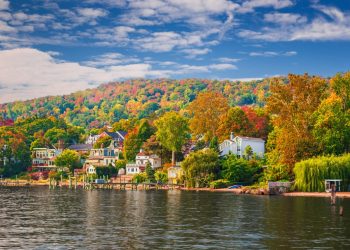Commentary by Jason Kotar
RISMEDIA, June 16, 2008-During the subprime loan era, a number of government loan programs originally established to help low- to moderate income individuals and families afford home ownership, fell out of favor. We previously discussed how FHA and VA loan programs are now making a resurgence.
Similarly, the US Department of Agriculture Rural Development (RD) programs are making a comeback. These 100% financing loan programs are available for low to moderate income residents in rural areas across the country. The advantages of these programs, in addition to no down payment, are no private mortgage insurance, a 30-year fixed rate, all fees can be rolled into the loan, as well as flexible credit and qualifying guidelines. As with all loan programs, there are certain restrictions that are part of the program. However, these programs are specifically designed to enable individuals or households who cannot get conventional financing, afford a home. Let’s review how they work.
There are two types of RD loan programs: “direct” and “guaranteed.” Before we discuss the differences, let us review the common elements of the programs. First, you need to determine if the subject property is located in an eligible area. Second, you need to determine if you are income eligible. This information can readily be obtained by logging onto www.rurdev.usda.gov and clicking on “housing and community facilities.” Each State, at the County level, has identified areas that qualify for these programs. In addition, qualifying income levels can vary at the County level. Qualifying income is determined by adding all income from those individuals that will be living in the home less certain expenses for children, child care and certain other expenses.
You must meet RD guidelines for housing and debt loads and pay your bills on time. You must also be a citizen or here legally, planning to be a citizen.
The subject property can be for new or existing homes and must meet minimum FHA standards. Construction to permanent loans are also allowed. Other types of properties that also qualify are modular and Condo / Town homes.
Direct Loans are initiated and funded directly by the USDA. These loans are for low income households (under 80% median income for the area.) Applicants for these loans need to prove that they can make payments on the property and have “reasonable’ credit histories.
Guaranteed Loans are loans for moderate income families (with an income level of up to 115% of the median income for the area.) Applicants for these loans apply with Lenders approved by the USDA. In these cases, the lenders set the interest rates, which are guaranteed by the government.
As these USDA loan programs are generally not well understood by Realtors or builders, let alone the consumer, the USDA has area offices for all eligible counties throughout the U.S. ready to assist with information on these programs as well as Lenders involved in making these loans. That contact information is also available on the previously mentioned website.
While there are significant differences from traditional loan programs, there are resources readily available to help determine eligibility of potential buyers. Getting these loans approved and closed are comparable to FHA loans. These USDA loans are generally the lowest cost loans available on the market. They should be an obvious choice of a loan product for low and moderate income individuals in rural markets.
Jason Kotar is president of Kotar & Associates and Diversity Lending Group, Inc.
For more information, call (954) 734-3504, e-mail JKotar@DiversityLG.com, or visit http://www.diversitymortgagenews.com/.










